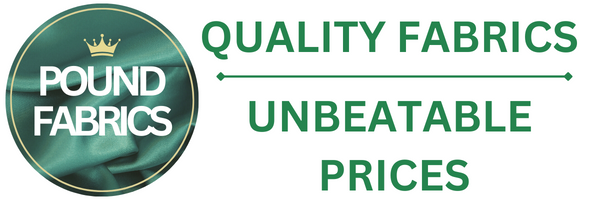
Sometimes your sewing machine may get a little lethargic and act less cooperative than usual. Instead of breaking your bank to afford replacing your machine – first give it a little bit of TLC and see how giving it a good clean can make it run much more smoothly!
This guide is designed to help you give your machine a lovely spring clean, something you need to do every once in a while, to maintain your machine in top condition or after sewing a particularly messy fabric. Some leading sewing machine companies recommend cleaning your machine with every 10 hours of use - but if, like us, keeping track of the hours you spend on your machine doesn’t make it to the top of your priority list whilst battling to finish your latest project, it is perfectly acceptable to clean less or more frequently than the standard 10 hours.
Multiple problems are caused by the accumulation of dust, lint and thread within your sewing machine. Therefore, removing these from the working parts of your machine will definitely enhance the quality and feel of your sewing projects!
Read on to find out how to show your machine some love...
You will need:
- Your machine instruction manual: this will provide you with more specific suggestions for areas of your machine that you can clean and instruct you with the best ways to do this.
- Lint brush: most machines come with a lint brush provided. However if it doesn’t, you can use a small, clean makeup brush or paintbrush.
- Machine needles: after cleaning your machine, you should replace the needle. This is especially important if you are starting a new project - just because your needle isn't broken, doesn't mean it isn't blunt!
- Soft cloth: a soft muslin cloth is best.
Begin by unplugging your machine. Remove and discard your needle, making sure you have a spare appropriate for your next project to replace it with.
Remove your presser foot and the bobbin.
And the needle plate and bobbin case (if your machine uses one).
Using your lint brush,lightly remove lint and any debris inside each piece of equipment you have removed.
Then move onto the feed dogs and areas surrounding and underneath, gently brushing away any lint.
If your machine has a side cover, now is the time to open this out to clean out the thread path. Thread may break and create debris in this area. If you cannot remove the side cover, take a piece of thick Cotton thread or dental floss, and run this through the thread channel several times to dislodge any lint.
Clean all exterior faces of the machine with your soft cloth.
Plug your machine into the power supply and turn it on. Run the machine without the needle, needle plate, presser foot, bobbin and bobbin case to make sure everything is still in the right place and running smoothly.
Turn off your machine. Replace all components that you have removed in their places.
Insert your new needle.
Lubricate
Once you have cleared your machine of lint and debris, you may want to lubricate some components. Alwayscheck your instruction manualas to whether your machine requires lubrication at all (some newer machines do not!), for what type of oil to use and what components you may need to lubricate.
When lubricating your machine NEVER use WD-40 or other household oils.
Look for a clear oil designed especially for use in sewing machines. Once lubricated, run some thread and fabric through your machine to remove excess oil.
General maintenance
There are lots of things you can do to maintain the smooth running of your machine in between cleans too:
- Keep your machine covered: dust, lint, pet hair, human hair, thread and other debris easily settle on and inside your machine. Keep your machinecovered with a soft coveror choose a machine that has a hard case that fixes to the top. Try and keep it stored safely away in a cupboard or on a table.
- Keep your sewing area tidy: easier said than done, but this reduces contact with foreign particles!
- Micro clean after each use: brush away lint and dust from around the machine after every use.
- Change needles often: bent and dull needles will damage your machine and your
- projects, so try to replace needles as often as you start new projects, especially if you are sewing through multiple layers or unusual fabrics.
- Only use your machine with clean hands: this avoids grubby fingerprints and sticky buttons and displays.
- Get your machine seen by a professional: as a rule of thumb, het your machine serviced approximatelyevery 2 years by a professional, who can service all of its parts. This usually includes cleaning, oiling, tension adjustment and testing of all moving parts.
While it is super easy to keep your machine clean and tidy yourself, if there are still problems after following these steps, then we recommend taking your machine to a professional service provider or authorised dealer, who can help assess any bigger problems.
To see our full range of fabrics, please click here.
We hope you enjoyed our simple guide on how to clean your sewing machine. Make sure to tag us @poundfabrics and show us your creations on Instagram, Facebook and Twitter!
Copyright © 2019 Pound Fabrics. All Rights Reserved











Patricia Knight
January 23, 2024
A timely reminder as I have just bought some more beautiful material from you to add to the stash I AM going to use this summer.
Thank you for the clear instructions and advice.